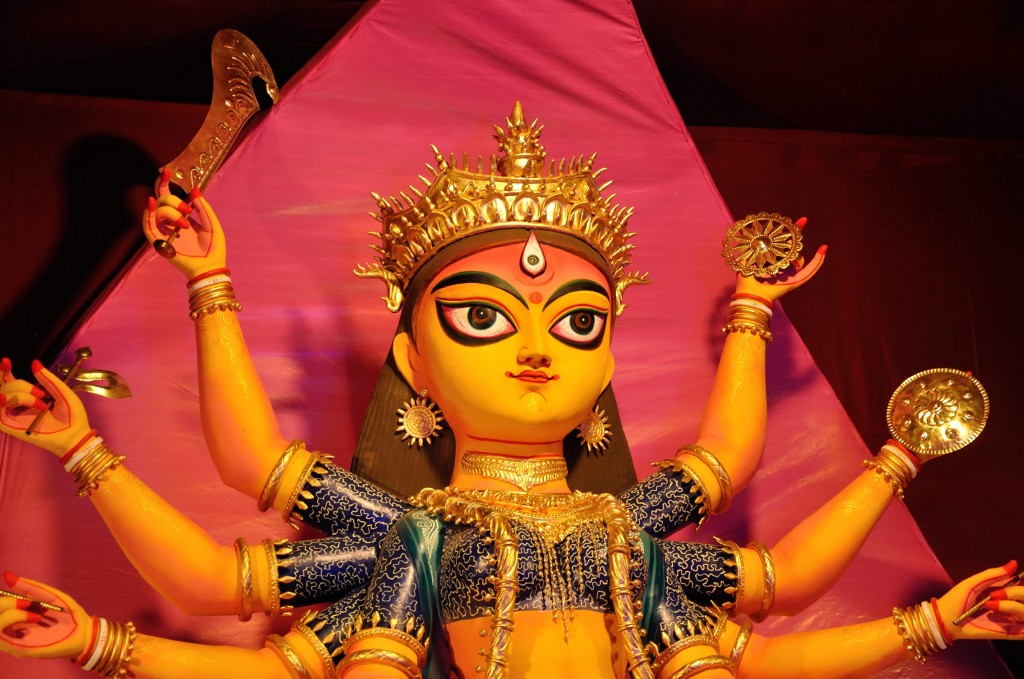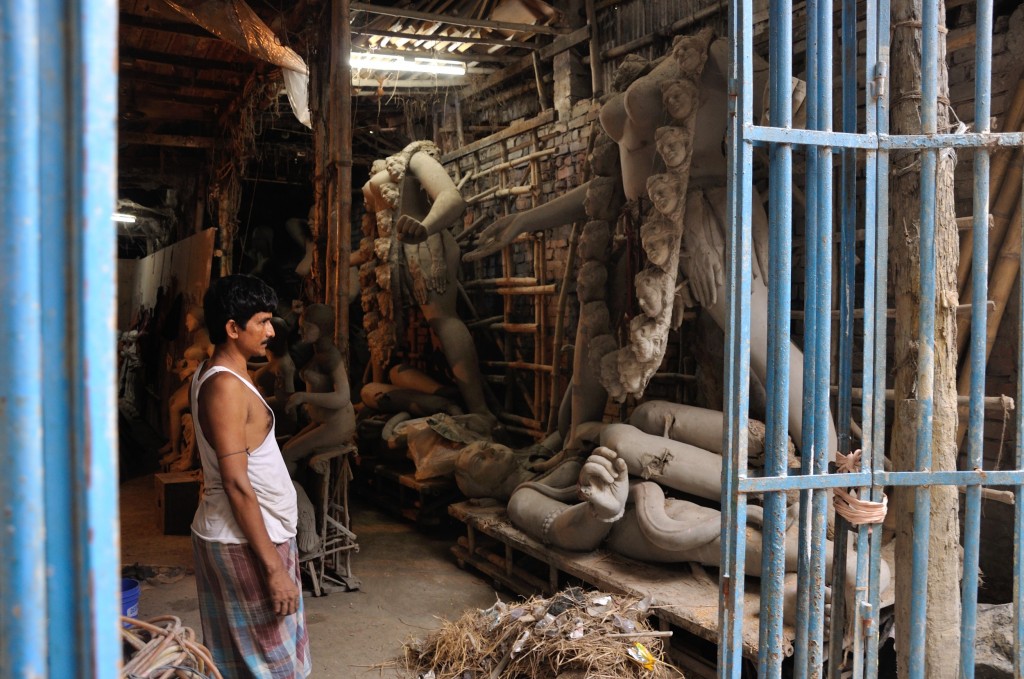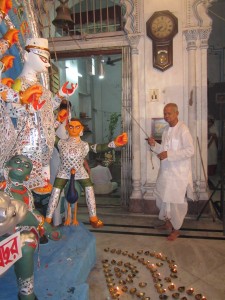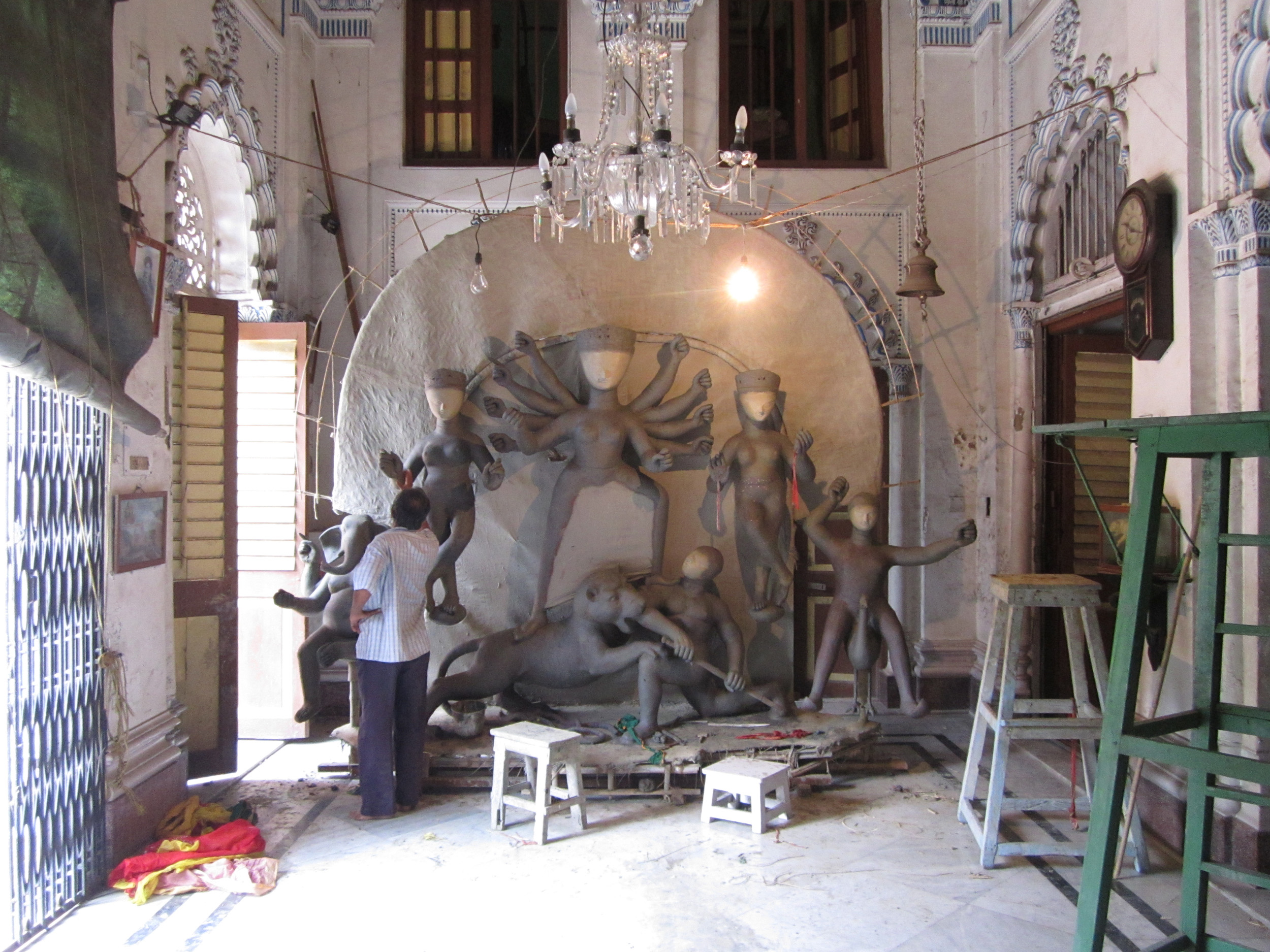Saraswati is the goddess of knowledge, music and art, and is the daughter of Lord Shiva and Ma Durga. In West Bengal, Saraswati is revered by schools and universities, because of the belief that she endows the worshipper with speech, wisdom and learning.
Saraswati Puja takes place this year in later January, so preparations of clay images at Kumartuli began in late December. The energy at Kumartuli is much quieter than the frenzied activity of Durga Puja preparations, but there were a group of artisans in the neighborhood who were making some spectacular images!


Saraswati is either accompanied by or seated on a swan, and is dressed in white for purity. In the images made at Kumartuli, she is mostly depicted with two hands that play a stringed instrument called the veena. In the images where she has four hands, the other two hands will hold a rosary and a book.



Saraswati is also a prominent figure in Buddhist iconography – the consort of Manjushri. Her early history is as a river goddess, and I saw a number of figures adorned with flowing, watery imagery.
Dilip Pal and his assistants were working on eleven commissioned Saraswati images during this time, ranging from two to four feet tall. The floor of Dilipda’s studio at the Shovabazar Rajbari was blanketed with straw, as assistant Netal Pal bent and wrapped and compressed the straw into voluptuous female forms.





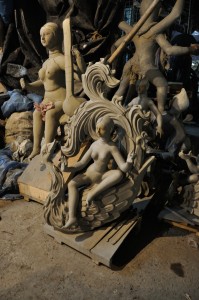


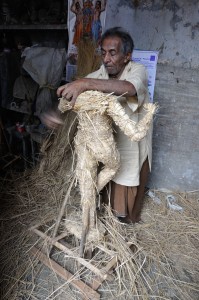
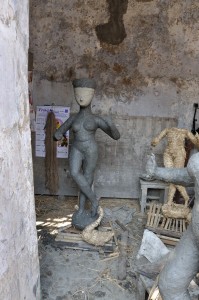


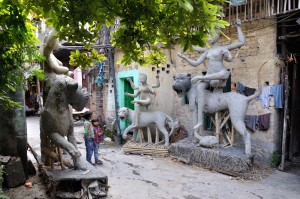








 her very active gesture of stomping on her consort Lord Shiva (other interpretations are that of accidentally doing so, and also that her foot on his body calms her anger).
her very active gesture of stomping on her consort Lord Shiva (other interpretations are that of accidentally doing so, and also that her foot on his body calms her anger).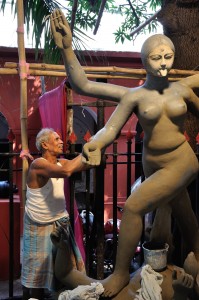 Once the figures of Kali and Shiva had been formed in straw, they moved them to the street outside of the Shovabazar Rajbari, just next to a tiny Shiva shrine. Over the next several days, a bamboo, cloth and paper pandal was built over and around the figures. I enjoyed observing this process immensely, because simply by being present in the situation, I became part of the rhythm of the street.
Once the figures of Kali and Shiva had been formed in straw, they moved them to the street outside of the Shovabazar Rajbari, just next to a tiny Shiva shrine. Over the next several days, a bamboo, cloth and paper pandal was built over and around the figures. I enjoyed observing this process immensely, because simply by being present in the situation, I became part of the rhythm of the street.
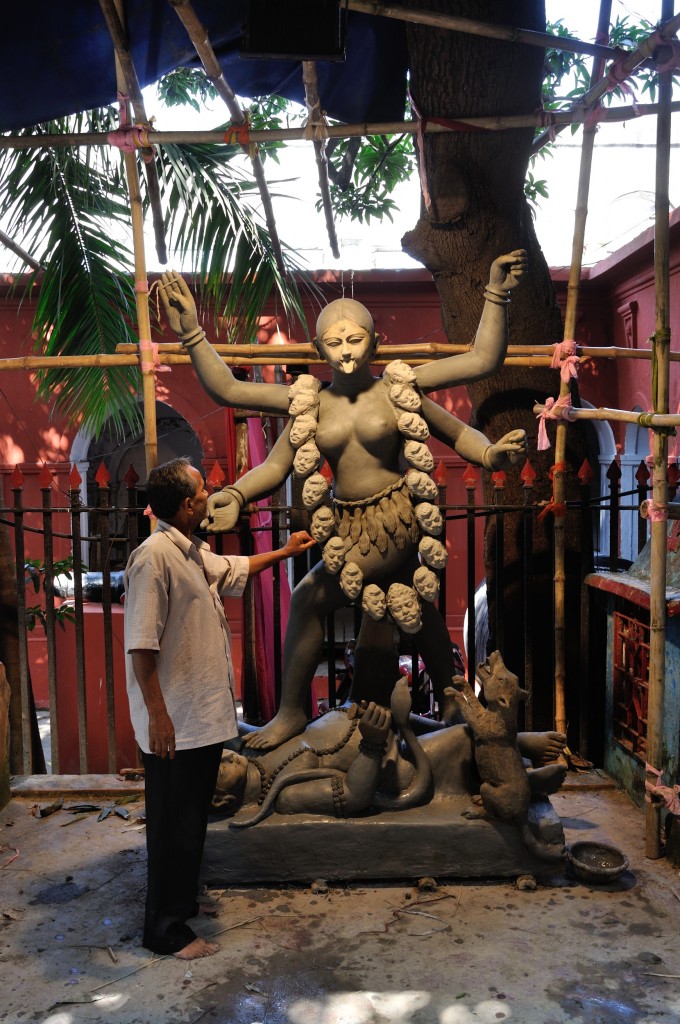



 Waiting outside the Rajbari for the pandal viewing to begin later that evening.
Waiting outside the Rajbari for the pandal viewing to begin later that evening. First glimpse of Durga
First glimpse of Durga The Durga pandal with all of the clothing, headdresses, jewelry and other props, except – Durga’s hands are yet to be holding their ten weapons.
The Durga pandal with all of the clothing, headdresses, jewelry and other props, except – Durga’s hands are yet to be holding their ten weapons. Durga
Durga

 A short distance from the Shovabazar Rajbari was this mountain-themed pandal, studded with giant heads. A few close-ups follow:
A short distance from the Shovabazar Rajbari was this mountain-themed pandal, studded with giant heads. A few close-ups follow:








